The potential of hypoxia markers as target for breast molecular imaging--a systematic review and meta-analysis of human marker expression
- PMID: 24206539
- PMCID: PMC3903452
- DOI: 10.1186/1471-2407-13-538
The potential of hypoxia markers as target for breast molecular imaging--a systematic review and meta-analysis of human marker expression
Abstract
Background: Molecular imaging of breast cancer is a promising emerging technology, potentially able to improve clinical care. Valid imaging targets for molecular imaging tracer development are membrane-bound hypoxia-related proteins, expressed when tumor growth outpaces neo-angiogenesis. We performed a systematic literature review and meta-analysis of such hypoxia marker expression rates in human breast cancer to evaluate their potential as clinically relevant molecular imaging targets.
Methods: We searched MEDLINE and EMBASE for articles describing membrane-bound proteins that are related to hypoxia inducible factor 1α (HIF-1α), the key regulator of the hypoxia response. We extracted expression rates of carbonic anhydrase-IX (CAIX), glucose transporter-1 (GLUT1), C-X-C chemokine receptor type-4 (CXCR4), or insulin-like growth factor-1 receptor (IGF1R) in human breast disease, evaluated by immunohistochemistry. We pooled study results using random-effects models and applied meta-regression to identify associations with clinicopathological variables.
Results: Of 1,705 identified articles, 117 matched our selection criteria, totaling 30,216 immunohistochemistry results. We found substantial between-study variability in expression rates. Invasive cancer showed pooled expression rates of 35% for CAIX (95% confidence interval (CI): 26-46%), 51% for GLUT1 (CI: 40-61%), 46% for CXCR4 (CI: 33-59%), and 46% for IGF1R (CI: 35-70%). Expression rates increased with tumor grade for GLUT1, CAIX, and CXCR4 (all p < 0.001), but decreased for IGF1R (p < 0.001). GLUT1 showed the highest expression rate in grade III cancers with 58% (45-69%). CXCR4 showed the highest expression rate in small T1 tumors with 48% (CI: 28-69%), but associations with size were only significant for CAIX (p < 0.001; positive association) and IGF1R (p = 0.047; negative association). Although based on few studies, CAIX, GLUT1, and CXCR4 showed profound lower expression rates in normal breast tissue and benign breast disease (p < 0.001), and high rates in carcinoma in situ. Invasive lobular carcinoma consistently showed lower expression rates (p < 0.001).
Conclusions: Our results support the potential of hypoxia-related markers as breast cancer molecular imaging targets. Although specificity is promising, combining targets would be necessary for optimal sensitivity. These data could help guide the choice of imaging targets for tracer development depending on the envisioned clinical application.
Figures
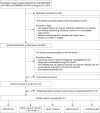
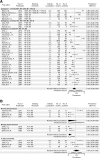
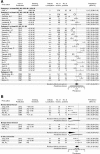
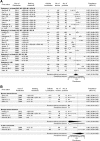
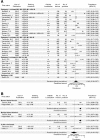
References
Publication types
MeSH terms
Substances
LinkOut - more resources
Full Text Sources
Other Literature Sources
Medical
Miscellaneous

